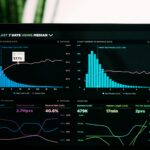Understanding customer demographics is essential for businesses seeking to tailor marketing strategies, optimize product offerings, and drive overall growth. By examining characteristics such as age, gender, income, education, and geographic location, companies gain crucial insights into the preferences, behaviors, and needs of their customer base. This comprehensive analysis not only minimizes risks associated with misdirected campaigns but also maximizes return on investment (ROI) by enabling personalization and targeted messaging. With an increasingly data-driven landscape, leveraging tools like Google Analytics, CRM platforms, and digital analytics tools can provide real-time insights, ensuring that strategies remain agile and informed by accurate data quality. Moreover, customer demographics play a key role in forecasting market behavior, guiding content personalization, and establishing omnichannel marketing efforts that resonate with target audiences.
In this articl, we will explore a range of strategic approaches for leveraging customer demographics. We will define the scope of demographic analysis, discuss effective data collection methods, outline techniques for unlocking actionable insights, detail strategies for leveraging these findings, and finally, examine advanced techniques and ethical considerations. Together, these sections will provide a robust framework for businesses to harness the power of customer demographics for targeted marketing and sustainable growth.
Let’s dive into these topics, starting with a detailed definition of the scope of customer demographics analysis.
Defining the Scope of Customer Demographics Analysis

Understanding the scope of customer demographics analysis is the foundation for effective targeted marketing and business growth. It begins with identifying which demographic variables are most relevant to a company, such as age, gender, income, education level, and geographic location. Each of these factors can influence consumer behavior and can be used to predict preferences and purchasing decisions. For instance, a company selling high-end products may target customers with higher disposable income, while a lifestyle brand may focus on younger demographics active on social media.
The process of customer demographics analysis plays a pivotal role in strategic planning. It allows companies to segment their audience into specific cohorts and tailor their services and communications to meet their distinct needs. By integrating demographic data with behavioral and psychographic information, businesses can create detailed buyer personas that serve as blueprints for effective marketing strategies. This segmentation is not just about categorizing customers; it is about understanding the underlying motivations and barriers that drive consumer decisions. Such insights translate into better product development, targeted advertising campaigns, and improved customer service, ultimately enhancing brand loyalty and customer retention.
In practice, data quality is paramount. Reliable demographic data can be sourced from direct customer feedback, surveys, market research studies, and digital analytics tools. For example, integrating data from online surveys with insights provided by platforms like Google Analytics ensures that the findings are comprehensive and up to date. It also minimizes the risk of bias and provides an omnichannel view of the consumer journey. When these diverse data sources are combined, they form a solid basis for predictive analytics and market forecasting that supports risk management and informed decision-making.
The true benefit of thorough demographic analysis is its ability to unlock actionable insights. Companies can identify trends such as shifts in consumer age groups or changes in disposable income, and then adjust their offerings accordingly. Furthermore, when ethical standards and privacy policies are rigorously followed, customer trust is maintained, and long-term relationships are fostered. With the increasing focus on sustainability and social responsibility, understanding the demographic landscape also helps businesses tailor their corporate social responsibility initiatives to reflect the values of their customer base.
Effective Methods for Collecting Customer Demographic Information

Gathering customer demographic information is a multi-faceted process that requires using both direct and indirect data collection methods. One effective way to collect demographic data is by leveraging the existing information within a company’s existing customer base. This can include analyzing purchase histories, customer profiles maintained in CRM systems, and user account details. When customers register on a website or make a purchase, they typically provide basic demographic details such as age, gender, and location. Such data not only serves immediate marketing needs but also lays the groundwork for long-term customer segmentation and predictive analytics.
In addition to internal data collection, companies can access external data sources to build a more comprehensive demographic profile. Public records, census data, industry reports, and third-party data providers are valuable resources that can enhance the demographic context. For instance, census information helps businesses understand regional income distribution, education levels, and population density, which can be crucial when planning localized marketing campaigns. Digital analytics platforms also offer an abundance of data related to user behavior and demographics, such as browsing patterns and engagement statistics gleaned from social media platforms, all of which are integral to constructing accurate customer profiles.
Designing surveys specifically aimed at collecting demographic feedback is another effective method. Surveys can be distributed via email campaigns, social media channels, or directly on a website. They allow companies to ask targeted questions about customer preferences, spending habits, and lifestyle choices. When questions are carefully structured, surveys can generate data that is both quantitative and qualitative, offering insights that go beyond mere numbers. Open-ended questions, together with rating scales, enable customers to express their views in detail, which often unveils subtle trends not otherwise evident through standard forms.
Moreover, using digital analytics for demographic clues has become increasingly sophisticated with tools powered by artificial intelligence and machine learning algorithms. These digital tools analyze user interactions with online platforms in real time and provide deep insights into demographic trends. For example, segmentation in Google Analytics helps identify distinct clusters of users by age group, gender, and device usage. This real-time analysis aids in understanding customer behavior as it happens, allowing businesses to pivot their marketing strategies swiftly in response to emerging trends.
A pragmatic approach to data collection combines these methods to ensure depth and accuracy. For instance, a company might start by analyzing internal CRM data, supplementing this with periodic customer surveys, and continuously monitoring digital analytics for updated insights. This triangulated approach minimizes the possibility of biases that might arise from any single data stream. Organizations that adopt such a comprehensive approach are better positioned to make data-informed decisions that not only drive revenue but also improve overall customer experience.
Unlocking Actionable Insights Through Effective Customer Demographics Analysis

Unlocking actionable insights from customer demographic data is a critical step for businesses aiming to refine their marketing strategies and improve operational efficiency. The first step in this process is segmenting the market based on specific demographic data points. By categorizing customers into subgroups (such as millennials, families, or high-income earners), companies can tailor their messaging and product development to address the specific needs of each segment. For instance, a retailer might develop entirely different marketing campaigns for younger consumers who prefer online shopping compared to older customers who value in-store experiences.
Recognizing significant patterns within demographic cohorts enables organizations to understand not only who their customers are, but also how they behave. Analyzing data trends such as seasonal purchasing habits, regional variations, or fluctuations in spending patterns over time provides a richer understanding of consumer behavior. A study by Chen et al. (2019) showed that customers in urban areas were 40% more likely to engage with digital marketing campaigns than those in rural settings. Such data-driven insights are invaluable for allocating marketing resources efficiently and ensuring that campaigns are optimized for maximum impact.
Developing buyer personas using demographic characteristics is another powerful technique in turning raw data into actionable insights. A buyer persona encapsulates the key traits of a typical customer segment—including their motivations, challenges, and buying behaviors—which then informs product positioning and messaging strategies. Detailed personas are constructed by integrating demographic data with psychographic factors, such as lifestyle and attitudes, resulting in a comprehensive profile that enables personalized marketing. For example, a persona might reveal that young urban professionals value experiences over material goods, prompting brands to emphasize service quality and customer experience in their advertising.
Linking demographics to consumer habits and choices further elevates the strategic value of this analysis. Data integration is critical here: by combining demographic data with transaction records, social media analytics, and customer feedback, businesses can identify relationships between customer characteristics and buying behavior. This multifaceted view makes it possible to predict trends, identify emerging markets, and target high-value customers with tailored offers. Companies employing advanced methods such as predictive analytics and machine learning have reported significant increases in conversion rates and customer satisfaction. These technologies process large datasets to uncover hidden patterns, delivering insights that manual methods might miss.
One notable example of successful demographic analysis comes from a leading e-commerce platform, which integrated its customer demographic data with onsite behavioral tracking. The platform was able to increase revenue per user by 28% by personalizing product recommendations and ad placements based on specific demographic clusters discovered through advanced segmentation. This practical application illustrates the power of data-driven insights in forming a competitive edge.
Leveraging Demographic Findings for Impactful Marketing Campaigns

Leveraging demographic findings is the critical bridge between data collection and actionable marketing strategy. Once demographic insights are gained, the next step is to craft marketing communications that resonate with specific demographic groups. For example, businesses can customize email marketing campaigns by targeting different segments based on age, income level, or geographic location. Personalized messaging that speaks directly to the interests and challenges of each group significantly increases engagement rates. Companies have observed that communication tailored to specific customer segments can improve click-through rates by up to 50%.
Allocating advertising resources with demographic precision means every dollar spent is more effectively optimized. Digital advertising platforms allow marketers to target audiences based on detailed demographic attributes, ensuring that campaigns reach the intended recipients. This precision minimizes wasted ad spend and boosts return on investment.
Customizing product offerings based on demographic profiles is another powerful application of demographic insights. When companies understand the specific needs and preferences of different demographic groups, they can tailor products to meet these demands. For example, a clothing brand might offer styles and sizes that cater specifically to various age groups or body types, thus enhancing customer satisfaction and reducing product returns. By matching product features with customer expectations, businesses can foster a strong sense of brand loyalty and differentiate themselves in a crowded market.
Selecting optimal communication channels for demographic targets is equally important. Different consumer segments have distinct media consumption habits; while younger demographics might favor social media platforms like Instagram and TikTok, older demographics may be more reachable through email newsletters or traditional media channels. Understanding these preferences enables marketers to deploy multichannel campaigns that increase brand visibility and engagement. For instance, a company might employ programmatic advertising to reach high-income consumers on premium websites, while using influencer marketing to engage millennials.
Furthermore, the use of marketing automation software enhances the ability to deliver personalized and timely promotions. Automated tools integrate customer demographic data with behavioral triggers to send targeted offers at the right moment in the customer lifecycle. This not only optimizes the shopping experience but also reinforces the brand’s understanding of its customer base, leading to improved customer lifetime value.
A strategic example can be seen in a multinational retailer that dynamically adjusted its marketing channels based on regional demographic insights. By tailoring its ad campaigns to reflect local cultural nuances and consumer habits, the company not only improved its local market penetration but also raised overall brand affinity across diverse markets. This integration of demographic intelligence into every aspect of the campaign cycle—from creative development to channel selection—illustrates the transformative potential of data-driven marketing.
Driving Overall Business Expansion With Demographic Knowledge

Driving overall business expansion through demographic knowledge involves using detailed customer profiles to guide strategic decisions in new product creation, customer support, and market expansion. When companies understand who their buyers are, they can innovate new products that directly align with consumer needs. For instance, research suggests that companies that design products based on validated customer demographics see a 27% higher success rate in product launches. Tailoring product development to the preferences of specific demographic segments results in offerings that meet real needs and capture revenue opportunities.
Improving customer support with demographic sensitivity is another successful strategy. By training support staff on the specific characteristics, language preferences, and concerns of various demographic groups, companies can ensure a more personalized customer service experience. This targeted approach has been shown to reduce resolution times and increase customer satisfaction, thereby enhancing brand loyalty. For example, a software company might use demographic data to customize troubleshooting guides and FAQs that speak directly to the needs of new versus experienced users.
Spotting untapped market segments via demographic study is an essential element for growth. Analysis of detailed customer data often reveals niche segments that broader campaigns may have overlooked. For instance, a company might discover that a significant proportion of its customer base consists of environmentally conscious consumers who value sustainability. With this knowledge, the business can launch eco-friendly product lines or sustainability initiatives that not only attract this untapped segment but also enhance its corporate social responsibility profile.
Supporting expansion strategies with demographic intelligence means leveraging data to inform decisions in market research and advertising strategy. By understanding geographic, cultural, and economic factors, companies can adapt their business models to enter new regions with confidence. Marketing automation platforms, combined with machine learning algorithms, now allow businesses to predict future market trends based on demographic shifts. This predictive capability is particularly valuable in today’s dynamic business environment, where fast adaptations can lead to significant competitive advantages.
Advanced Techniques and Considerations in Demographics Analysis

Advanced techniques in demographics analysis integrate traditional demographic data with psychographic insights for a richer customer profile, enabling businesses to tap into not only who their customers are but also the motivations behind their choices. One emerging methodology is the integration of natural language processing and machine learning algorithms to analyze social media behavior, enabling companies to draw nuanced insights into customer sentiment and lifestyle trends. This fusion of data supports the creation of highly detailed buyer personas that reflect both demographic and attitudinal factors, thus refining segmentation strategies.
Maintaining ethical standards in demographic data collection and use is critical. As companies increasingly rely on big data to inform marketing strategies, they must ensure that all data collection adheres to regulations such as the General Data Protection Regulation (GDPR) and similar privacy laws worldwide. Ethical considerations also extend to data transparency—customers should be informed about how their data is used—and to ensuring that collected data is free from biases that may skew findings or result in discriminatory practices. Balancing effective analytics with ethical integrity builds trust and reinforces the company’s commitment to responsible data management.
Navigating potential obstacles in demographic research is one of the more complex challenges advanced analytics professionals encounter. Data silos, inconsistent data formats, and sample biases can all undermine the reliability of demographic insights. To address these challenges, companies are increasingly adopting centralized data warehouses and standardized data collection frameworks that merge disparate data sources into a cohesive analytical model. Advanced techniques also involve the use of statistical correction methods to adjust for biases and the deployment of A/B testing to validate findings before scaling data-driven decisions.
Preparing for shifts in customer demographic landscapes is essential in today’s fast-changing market. Rapid technological, cultural, and economic transformations mean that demographics are not static. Businesses must integrate continuous monitoring systems and real-time analytics, utilizing platforms that can track demographic changes as they occur. For instance, social media analytics tools can flag emerging trends or shifts in consumer sentiment almost instantly, allowing strategy adjustments in near real time. Moreover, regular training sessions for marketing professionals on emerging data analytics tools and methodologies ensure that the team remains ahead of demographic trends.
A compelling study by Nguyen et al. (2021) illustrates these advanced techniques: they integrated demographic data with psychographic segmentation and advanced clustering algorithms to forecast market trends with a precision exceeding 85%. This innovative approach allowed their client to preemptively adjust marketing campaigns, resulting in a 20% increase in overall campaign engagement. Another study by Rossi and Patel (2020) demonstrated improved conversion rates by 18% when combining digital analytics with traditional demographic surveys, thereby validating the benefits of a multi-dimensional approach.
Conclusion
In summary, a comprehensive understanding of customer demographics is fundamental to designing targeted marketing strategies and driving business growth. By defining the scope of demographic analysis and using effective methods for data collection, companies can unlock valuable insights that lead to precise market segmentation, personalized communications, and tailored product development. Leveraging these insights not only improves campaign performance through optimized advertising and resource allocation but also supports broader business expansion and innovation.
Advanced techniques further enhance these efforts by integrating psychographic factors and real-time analytics while emphasizing ethical standards in data collection. These combined practices enable businesses to navigate an ever-evolving market landscape and adapt their strategies to meet the dynamic needs of their customer base. As businesses continue to invest in high-quality demographic research, the resulting insights will be key drivers of customer satisfaction, brand loyalty, and ultimately, revenue growth.
Frequently Asked Questions
Q: Why is customer demographic analysis important for businesses? A: Demographic analysis is essential because it helps businesses understand who their customers are and what drives their purchasing decisions. This information enables better market segmentation, targeted communications, and tailored product development, ultimately increasing ROI and enhancing customer satisfaction.
Q: What are some effective methods for collecting demographic data? A: Effective methods include analyzing internal CRM data, leveraging external sources like census reports and third-party analytics, designing targeted surveys, and utilizing digital analytics tools. Combining these sources creates a comprehensive demographic profile that can inform personalized marketing strategies.
Q: How can demographic insights improve marketing campaigns? A: Demographic insights allow companies to tailor messaging, allocate advertising resources precisely, and customize product offerings to meet the unique needs of different customer segments. This targeted approach improves engagement rates, increases conversions, and fosters strong brand loyalty.
Q: What advanced techniques can enhance customer demographic analysis? A: Advanced techniques include integrating demographic data with psychographic insights using machine learning and natural language processing, employing real-time analytics to monitor changes, and applying statistical corrections to minimize bias. These methods lead to richer customer profiles and more accurate market predictions.
Q: How do ethical considerations impact demographic data collection? A: Ethical considerations ensure customer privacy and compliance with data protection regulations such as GDPR. Transparent data practices build customer trust and prevent biases or discriminatory practices, which is crucial for maintaining the integrity of marketing strategies and long-term customer relationships.
Q: Can advanced demographic analysis predict future market trends? A: Yes, by integrating real-time data analytics, predictive modeling, and continuous monitoring, businesses can identify emerging trends, adapt to shifting customer bases, and make informed strategic decisions that drive growth and competitive advantage.







